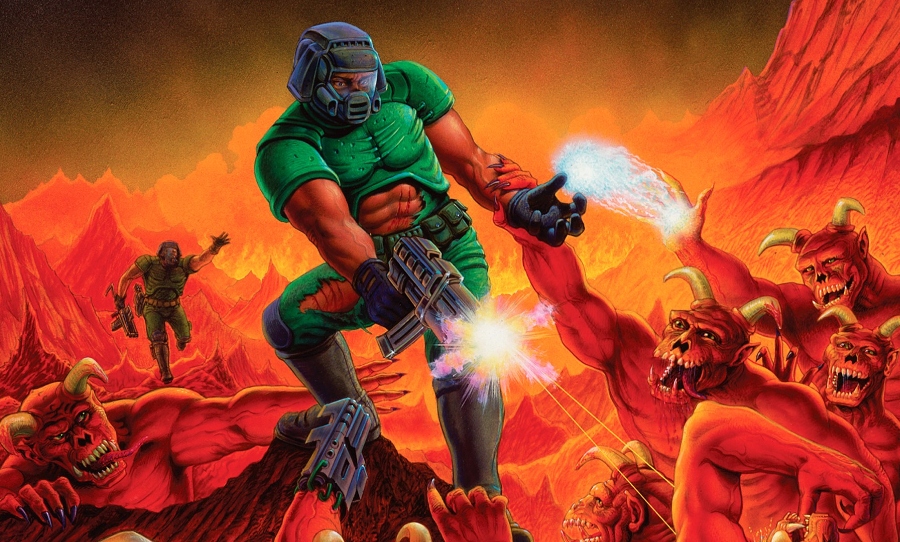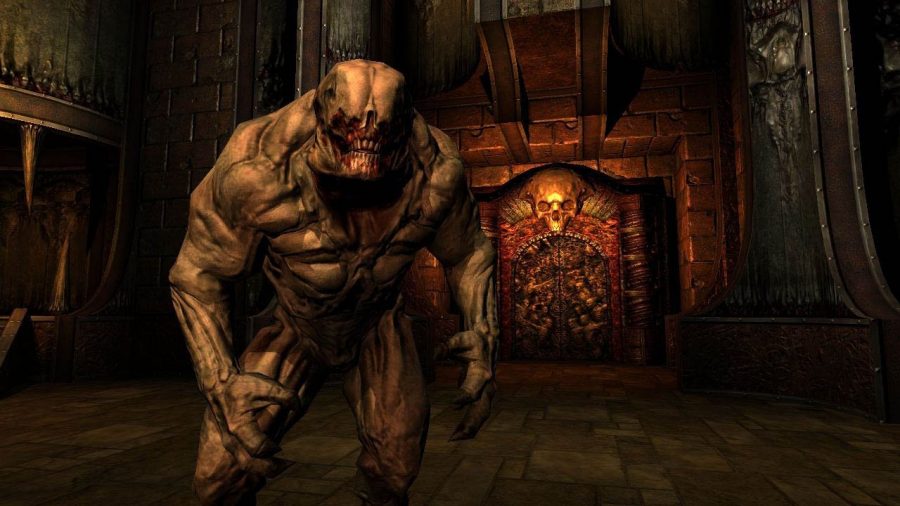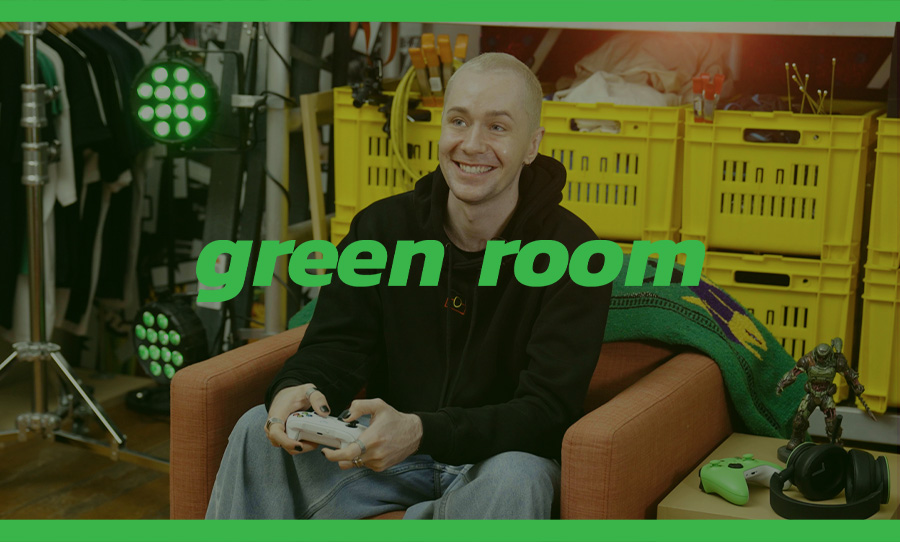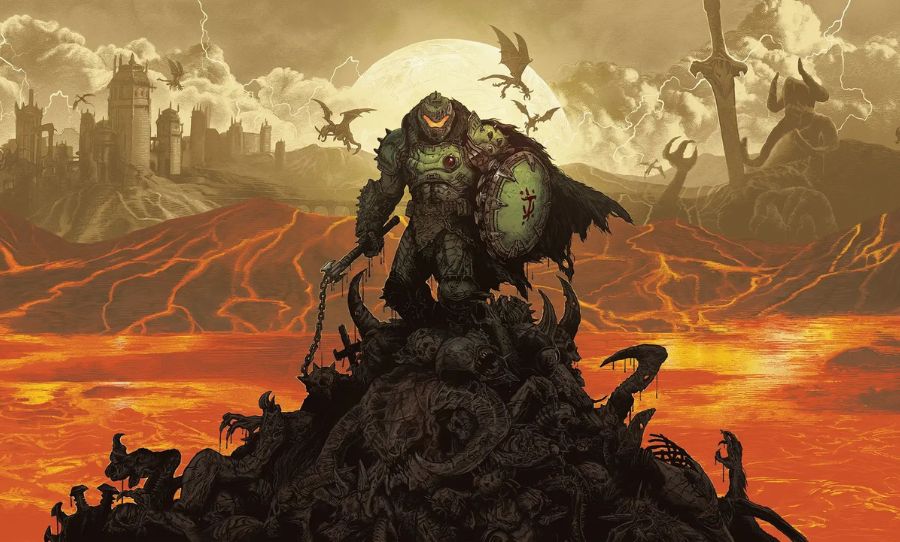With a resounding chorus of fevered praise surrounding the recently released DOOM Eternal, it’s important to recognise just how revolutionary the franchise has been.
DOOM has seen its fair share of controversy since the release of its original title in 1993. Fast forward 27 years and id Software has just released a full-scale 4k, fast-paced, vertically enhanced masterpiece that effortlessly blends modern and vintage FPS into a resounding statement. It is, however, still built on three fundamental pillars; shooting, blood, and fun.
It’s remarkable for a single gaming franchise to last 30 years, let alone see two revolutionary rises to prominence.

From pioneering the FPS genre in the early ’90s to setting an epic new standard in 2016, DOOM has followed a fascinating arc in gaming history.
1993 debut
While it wasn’t exactly the original first person shooter, DOOM was a close second that substantially raised the bar. Its predecessor, Wolfenstein 3D, was also developed by id Software just one year prior. When DOOM dropped in December 1993, it both pioneered the FPS genre and widened the scope for what was considered acceptable in video games.
Praised computer programmer and co-founder of id Software, John Carmack, was the mastermind behind DOOM and in a 2013 interview with Doomworld, made his inspirations clear. Not only was it heavily inspired by Ridley Scott’s iconic Alien films, it drew heavily upon Evil Dead 2 and ’80s horror in general. As for the title, Carmack explained:
“There is a scene in The Color of Money where Tom Cruise shows up at a pool hall with a custom pool cue in a case. “What do you have in there?” asks someone. ‘Doom’. replied Cruse with a cocky grin. That, and the resulting carnage, was how I viewed us springing the game on the industry.”
When DOOM hit the PC scene, it made an incredible splash. In fact, the game was soon installed on millions of machines across the US and caught the attention of Microsoft co-founder Bill Gates.
Launching Windows 95 at the time, Gates saw the opportunity to promote the operating system as a gaming platform to the general public. As a result, he teamed up with id Software to create an extremely bizarre but iconic advertisement documenting the release of the revolutionary computer software alongside an iconic game.
It is interesting to note that the game only took id Software nine months to complete, a far cry from the funding, effort, and time required for the AAA titles we see today. Furthermore, the 3D game engine was designed by John Carmack specifically for DOOM, instantly putting id Software on the forefront of game design for years to come.
Bigger, better, and more controversial
The following year the development team released DOOM II, which was simply bigger, better, and more gut-wrenchingly awesome. It elaborated on the complex map design of the first game, developing several sprawling level structures for the player to get unquestionably lost in. As a result, the game was considerably more difficult, with players frantically racing through unfamiliar corridors to avoid the denizens of hell.
Despite various improvements, there were no graphical upgrades. From a player’s perspective, DOOM II introduced some of the most famous and long-standing enemies in the entire franchise. Those that are still present in DOOM Eternal include the floating, gluttonous Cacodemon, the skeletal Revenant, the fire-hurling Mancubus, and the minotaur-inspired Baron of Hell.

Survival horror
In 2004, Carmack endeavoured to bring an invigorated version of DOOM to a modern audience with rebooted graphics capabilities. DOOM 3 was another considerable success, though it divided fans with its heightened focus on survival horror, taunting the player with atmosphere and sound design to ratchet up their adrenaline before the action.
This deviation in tone from the all-out, non-stop action of its predecessors was nonetheless a highly-praised game that saw the player continue to inhabit the boots of the nameless Doomguy. The mission was no different; eliminate an invasive demon threat by any means possible.

The abandoned sequel
A few years after the success of DOOM 3, id Software announced a return to the blood-pumping, pulse-pounding action of its predecessors with DOOM 4.
Carmack had a clear vision for the game, stating that, “It has to be a triumph of heavy weaponry over demonic forces in some way… you are the hero, and you are winning. You’re going to beat back all the hordes of Hell using all the tools at your disposal.”
In 2009, id Software was acquired by Bethesda Softworks, and in 2013, they broked the news was DOOM 4 was in limbo. It had now been five years since the announcement of the title and the franchise lurched into obscurity.
Return to glory
Following the death of DOOM 4, id Software designer and co-founder John Carmack departed in 2013 to work with Oculus VR.
Marty Stratton, an id Software employee since 1997, and Hugo Martin took up the creative mantle as co-directors for the DOOM reboot. They planned to infuse what fans loved so much about DOOM and DOOM II into a fully-realised visceral modern remake.
Bethesda was fully onboard the new project as Stratton affirmed, “There are a lot of other executives who wouldn’t have the trust in us and the brand after the reboot. I don’t know if there are a lot of big publishers who would allow their teams to push the way they do.”
The result was a smash hit. Doomguy – now dubbed the Doom Slayer – inhabited a colourful and brutal world with beautifully rendered enemies, fluid gameplay, a heavy metal score from Mick Gordon, and vivid fantasy locales on Mars and in Hell.
Keeping their earliest fans in mind, the game developers littered the maps with various easter eggs that harken back to the franchise’s origins and even included classic, pixelated levels to be unlocked at the end of each stage.
Simultaneously it was an inclusive experience, bringing a host of new fans to the genre and even seeing the game make the jump to the Nintendo Switch for the first time. Whether it was down to minute lighting details or the throaty roar of the Super Shotgun, the developers didn’t cut any corners.
It’s unprecedented that one franchise can revolutionise an entire genre of games, then do so again almost 30 years later. DOOM Eternal is now being deservedly praised as a new benchmark for first person shooters.
DOOM Eternal is out now for PC, Xbox One, and PlayStation 4.



